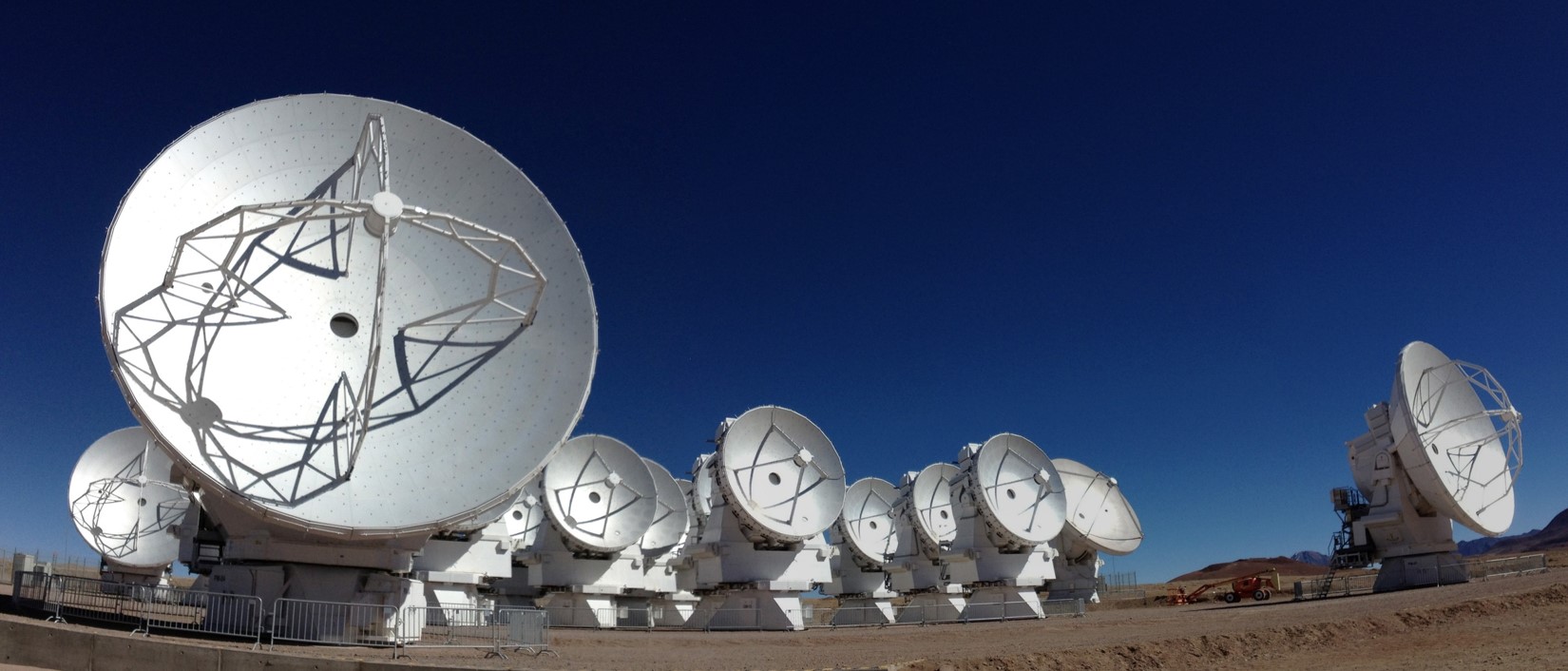Located at 5,000 meter altitude at the Atacama Desert in Chile, ALMA, Atacama Large Millimeter/submillimeter Array, the world’s largest radio observatory, is literally pushing Cisco® technology to the limits.
Having 66 antennas almost 15 meters tall – the eyes of ALMA – operating day and night to capture the signals of the universe to explain how stars and planets were formed is not an easy task. Low temperatures, high winds and snow, low humidity, dust, and a lack of oxygen are tough challenges that the ALMA staff and its network infrastructure have to endure.
To deal with one of the most extreme environments of the planet, it’s required a robust and reliable digital network architecture to take all the data from the antennas to the brain of ALMA, a supercomputer capable of processing the information from the ALMA antennas in real-time and transforming it into one cohesive data stream.
Cisco solutions are deeply integrated within ALMA operations, making Cisco an end-to-end solution provider helping ALMA, the world’s largest observatory, to fulfill its mission: unveiling the mysteries of the Universe.
“ALMA is, in simple words, a factory that produces scientific data and delivers them to the astronomical community, but for this supply chain to work, we need a reliable backbone, where we can support this process, and that is where Cisco plays a fundamental role”, said Jorge Ibsen, Director of the Computing Department of ALMA. “For over 10 years we’ve been working with Cisco solutions and have always given us cutting edge technology, which is what ALMA needs to generate large amounts of reusable scientific data. We currently produce about 200 terabyte (TB) TB per year, and that volume of data is expected to increase significantly over the following years in operations”.
“For a unique operation such as Alma to work, it is essential that the infrastructure operates in extreme conditions, but with the same advanced features and capabilities as if they were in a traditional office environment. One of the secrets to Cisco’s success is our ability to customize our solutions to meet the needs in various industries, their special requirements and unique conditions”, explained Mariana Portela, account manager at Cisco Chile.
Unveiling the Mysteries of the Universe
For that purpose, ALMA is using Cisco Catalyst 6500 Core switches capable of working at high altitude allowing great reliability in this extreme environment, and advanced functionalities. This critical equipment is installed in a data center located inside of the Array Operations Site Technical Building located at 5000m altitude. The building has oxygen injection, precise cooling systems and power lines to ensure optimal operational conditions, making it the highest data center in the world.
The antennas produce hundreds of gigabits (GB) of data every day, which are processed in the ALMA supercomputer – the Correlator – and then sent to the Operations Support Facility (OSF) at 2.900m altitude, located at 28Km from San Pedro de Atacama in the middle of the desert, through dedicated fiber optics links. The OSF hosts a data center, state-of-the-art labs, offices and dormitories allowing more than 200 persons to work every day, with reliable Internet access, Wi-Fi connections, video conferencing, telephone and presence services through Cisco network equipment, providing critical services given the remote nature of the facilities.
It’s at the control room in the OSF, the decision-making neurons of ALMA, where astronomers and operators command all the antennas to observe the universe and where the captured data is stored, essentially acting as the short term memory of ALMA. To do that, a set of servers, storage units and very specialized software is needed to control the 66 antennas. However, a great challenge was presented to maximize the operation throughput of the onservatory, groups of antennas needed to be controlled and operated independently from others and to act as parallel production lines. But duplicating the control hardware and software was too expensive, and the workload for reconfiguring them and to change all the required optic cabling to properly connect each single antenna was overwhelming.
Fortunately, advances in the network industry together with the maturity of the Cisco virtualization technology allowed ALMA to provide a solution that allows replicating the control servers and software without changing their network address definition. This is only possible with virtual routing and LAN capabilities of Cisco core switches. The solution brings increased operational efficiency delivering dynamic reconfiguration of antennas and switches, with minimum time and zero human intervention in the cabling. ALMA pushed the virtualization initiative even further, by migrating classical rack mount servers into Cisco B22-M3, Cisco UCS Blade Servers and Cisco Nexus® 5500 Switches, allowing them to standardize and consolidates the control servers and software and to reduce complexity en IT’s environment. The advanced administration tools come with simplified dashboards, making them intuitive for users from other departments to manage the antennas.
Data from observations is finally sent to Santiago, where the main ALMA archive node – the long-term memory of ALMA. Resides. The data is stored and processed through high-speed networks using Cisco Nexus switches. After processing, the end data products are sent to the ALMA Support Centers, allowing the worldwide science community to make breathtaking scientific discoveries.



















